Hi everyone, this is Brie the Plant Lady checking in with more professional advice about planting in Soil³ humus compost. Over the past few years I have gotten a lot of questions about how to plant in Soil³. This month, I hope to provide easy insights so you can be ready for spring… which may have already sprung for most of the Southeast!
As I promised in my last blog, 2020 is the year for me to debunk garden myths. So, send me your questions and I promise I will address them in future posts. In an era of constant communication, too much bad advice is circulating. This month I am taking on rototillers.

MYTH: You should till compost into your existing soil.
 To put it simply, this concept is very last century- literally. Tilling was a farming practice utilized around the world until it became apparent that this led to a decline in topsoil. You see disrupting the soil enables more particles to wash away in heavy rains. It also negatively impacts the soil structure, not to mention chopping up the existing microbes that are actively living in the ground and helping feed the plants.
To put it simply, this concept is very last century- literally. Tilling was a farming practice utilized around the world until it became apparent that this led to a decline in topsoil. You see disrupting the soil enables more particles to wash away in heavy rains. It also negatively impacts the soil structure, not to mention chopping up the existing microbes that are actively living in the ground and helping feed the plants.
Instead of tilling: TOPDRESS. This is a really easy concept, almost too easy and people try to make it more complicated. Just layer Soil³ humus compost on the ground surface - the more the better. Then plant or seed directly into it. Allow the plants roots to naturally incorporate the Soil³ into your native soil. Over time you will develop a nutrient dense soil base that will be easy to grow in. So please, put the tiller down and order a bag of Soil³, stat!
The Gardening How To
Growing in Soil³ is awesome! Honestly, it makes me the best gardener I can be. All of the advice I am sharing is coming straight from my garden to yours. In past blogs I have discussed my compost failures, a sad reality that many gardeners face when purchasing compost from an unknown source. That is perhaps the most important aspect of being a loyal Soil³ user: I know what it is made with! 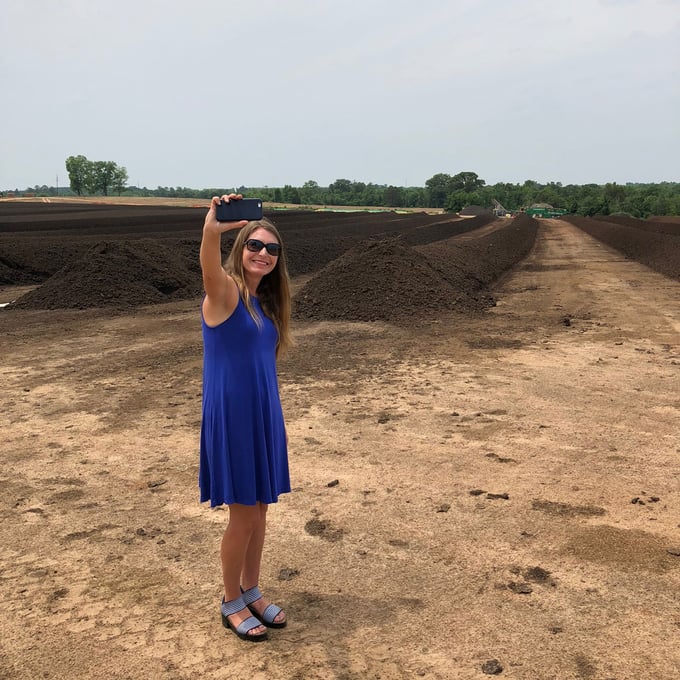
Soil³ selfie! I was so excited to visit the Soil³ compost farm in Middle Georgia.
You can go to the Soil³ website to gather all the details. Unlike most compost that is sold, Soil³ is derived of 3 distinct materials: decomposed grass clippings, wheat straw that was NOT treated with a persistent herbicide, and cow manure. By the way, those happy cows also eat straw and grass free of persistent herbicide, so you can rest assured you are not buying “killer compost.”
Have you heard of killer compost? If not, you should watch this episode of Growing a Greener World to educate yourself. Beware of horse manure composts! (In this video, Dr. Lee Reich, a former plant and soil researcher for the USDA and professor of horticulture, also advises against tilling. Then around the 15 minute mark, Joe Lamp'l discusses killer compost.)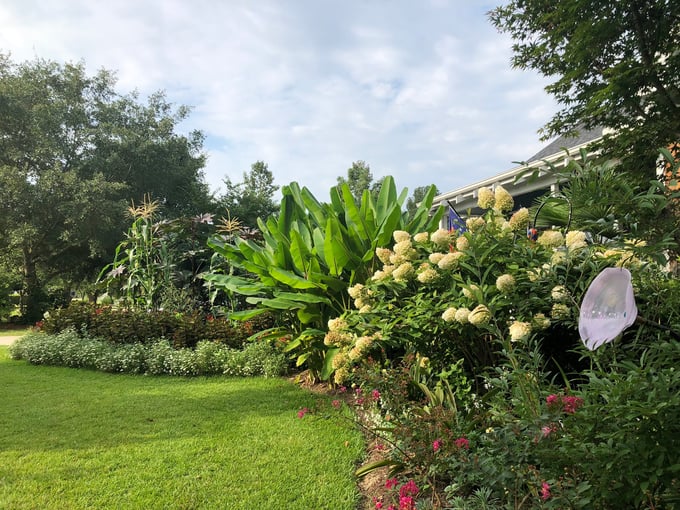
This bountiful foodscape bed has been topdressed with Soil³ compost over several growing seasons - and the results show!
Another reason why I LOVE using Soil³ in my garden is the superior texture of the compost. Because it is made from mixing the above three ingredients together, Soil³ has a finer, more well-drained texture making it appropriate for container gardening and seed starting. I frequently describe it as the “black cake mix of soil” and once you put your hands into it you will understand!
I had the opportunity to visit the Soil³ compost facility two years ago and witnessed firsthand how it is made. The long windrows are turned to ensure the organic matter breaks down evenly. Through natural decomposition, the soil temperatures rise to a level that kills any potential weed seeds. I know when I receive my BigYellowBag of Soil³ humus compost it is the highest quality available.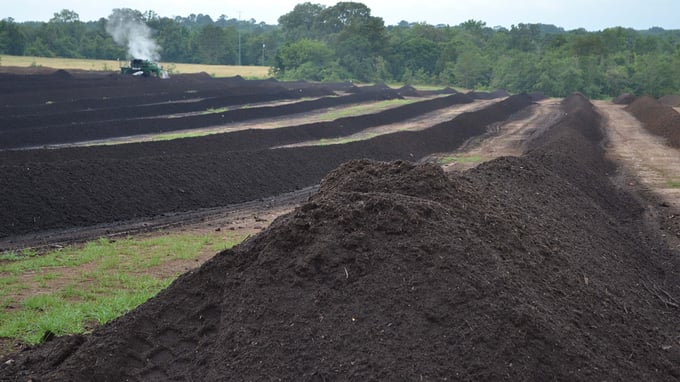
In the distance, a state-of-the art machine turns the compost piles from below and adds moisture if needed. This process is repeated many times over several weeks.
How To Use Soil³
This is the most versatile product that I have ever had access to for my gardening needs. I use the compost to topdress my landscape and turfgrass areas each season. I use their new blend, Veggie Mix, to fill my raised beds and for all of my container gardens and seeding. Basically, Soil³ can be used for every way that you plant. Plant right in it!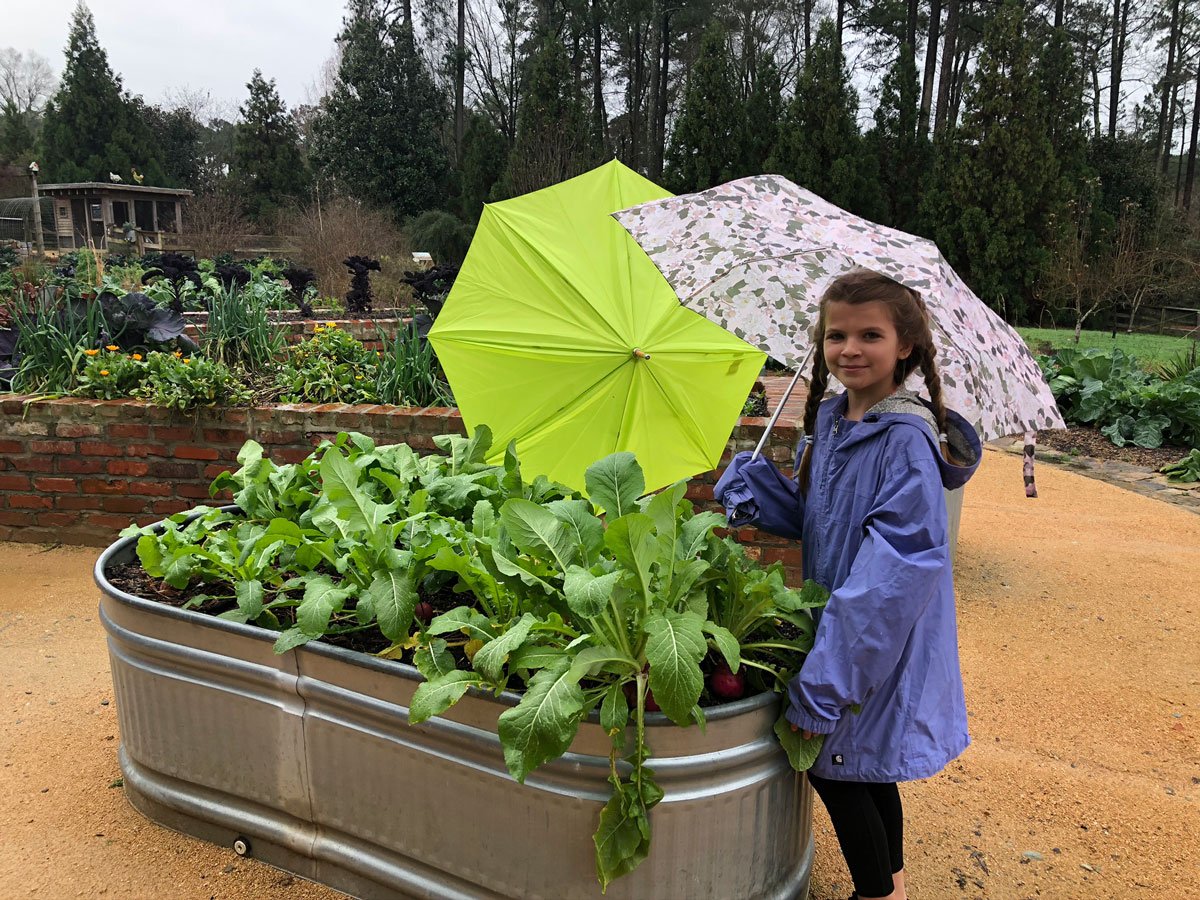
Topdressing Lawn and Landscape
Are you ready to take your yard to the next level? Then order a bag of Soil³ compost and top dress everything! This practice will help reduce your need to irrigate and fertilize and jump start your garden for the season ahead. I generally apply 1/4” of Soil³ to my turf areas and 1-2” directly on top of the mulch in my landscape beds.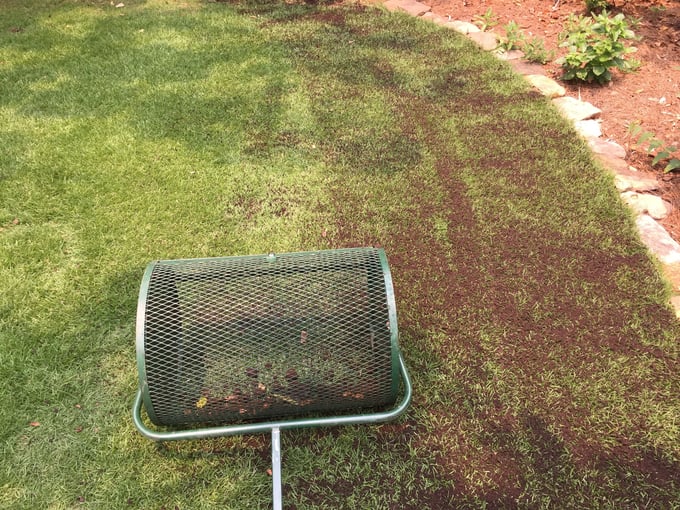
Renting a spreader makes topdressing your lawn with Soil³ easier. Photo by Hillary Thompson.
Once you have topdressed you can plant or seed directly in the compost. No need for tilling - let the plant roots do that for you.
When you are finished planting you can apply a light layer of mulch such as pine straw or my favorite, triple shred hardwood. But please, STOP USING THE COLORED MULCH! I know it is enticing, but the reality is that is just chopped up pallets dyed because they would look awful in their natural color. You have no way of knowing if that wood was treated or exposed to harmful chemicals. Stick to natural mulches that break down and improve your plot of Earth over time.
Raised Beds
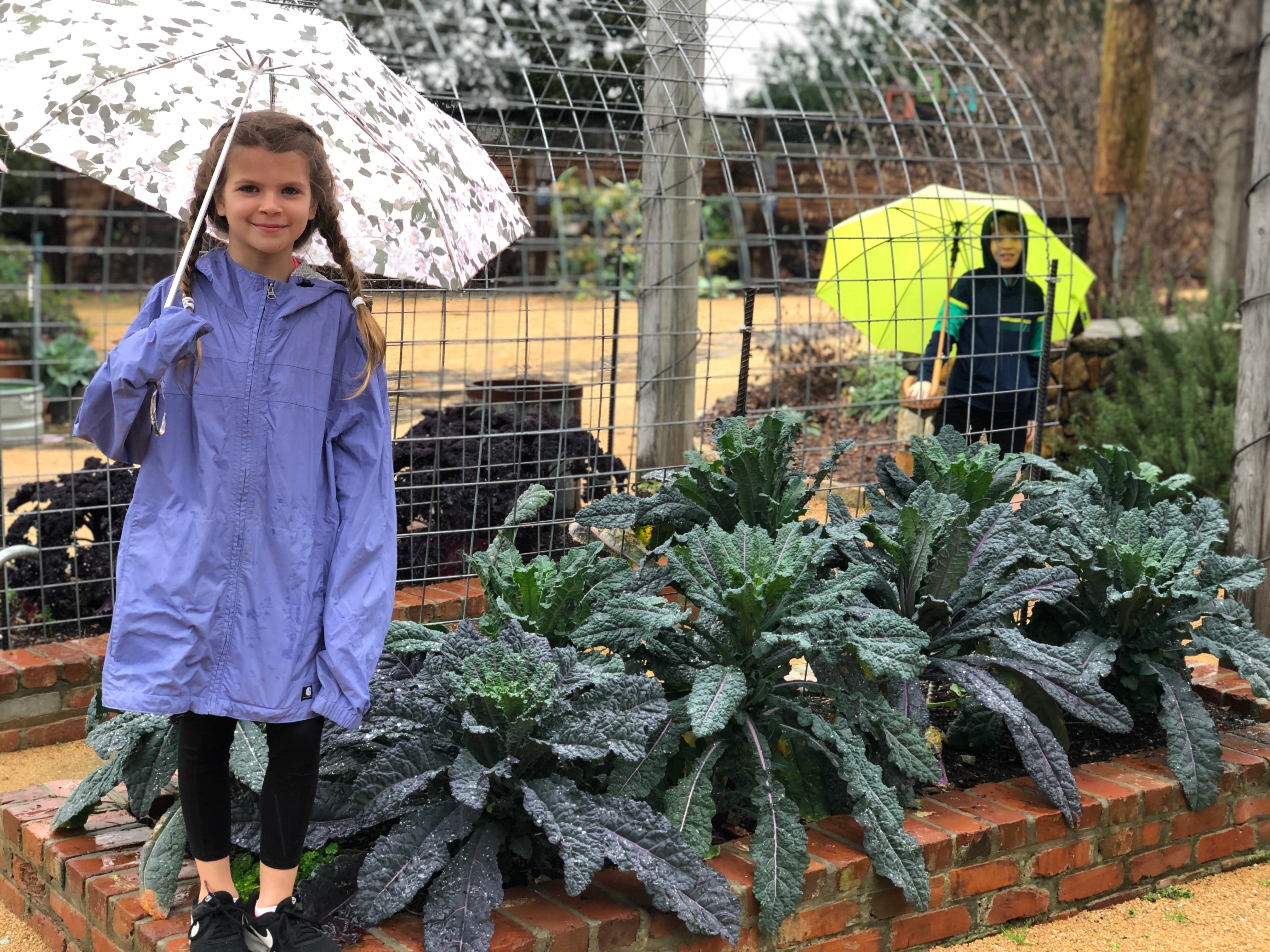 For raised beds, choose Veggie Mix. It has 25% bark added to the compost to improve drainage. There has never been a better soil created for raised bed gardening. Remember each BigYellowBag holds 1 cubic yard, so you can plan appropriately for your raised bed needs. (Use this calculator to figure out how much you need.)
For raised beds, choose Veggie Mix. It has 25% bark added to the compost to improve drainage. There has never been a better soil created for raised bed gardening. Remember each BigYellowBag holds 1 cubic yard, so you can plan appropriately for your raised bed needs. (Use this calculator to figure out how much you need.)
I recommend filling new beds entirely with Veggie Mix and planting right in it. Then, topdressing existing raised beds every season to ensure the best development for all your plants. No need to till it in.
Container Gardens
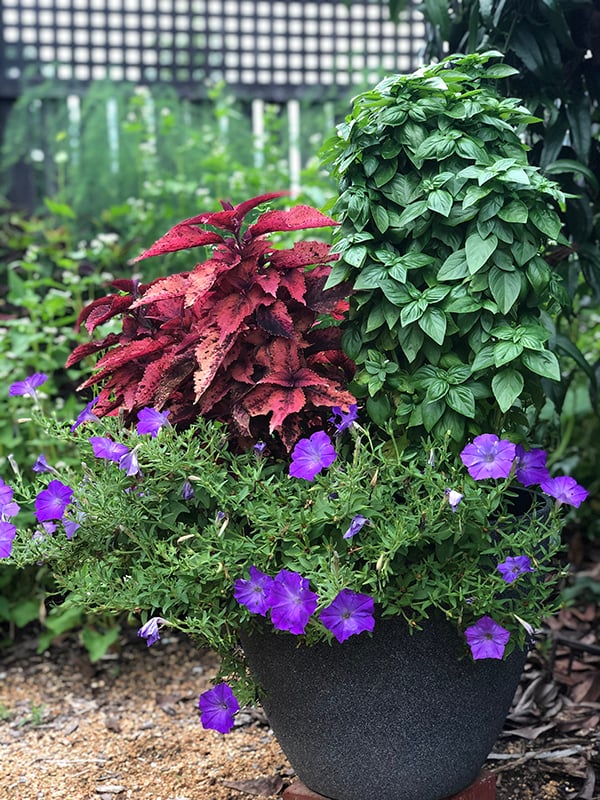
I will confess, it was like a giant light bulb moment for me when I realized I could use Soil³ as my container soil. Most composts, especially those that are exclusively animal-manure based, are too heavy for successful container gardening and now they have blended bark into it to create Veggie Mix, especially for containers, window boxes, and grow bags.
All my container gardens have thrived since transitioning from traditional potting soil. This change has reduced my irrigation needs significantly, especially through the winter. I have beautiful planters 12 months of the year growing exclusively in Soil³ humus compost and now I'm using their Veggie Mix. Plus, I have eliminated all that non-recyclable plastic from using lots of potting soil bags. It’s a win-win!
Here's an article I wrote about Summer Container Planting in Soil³.
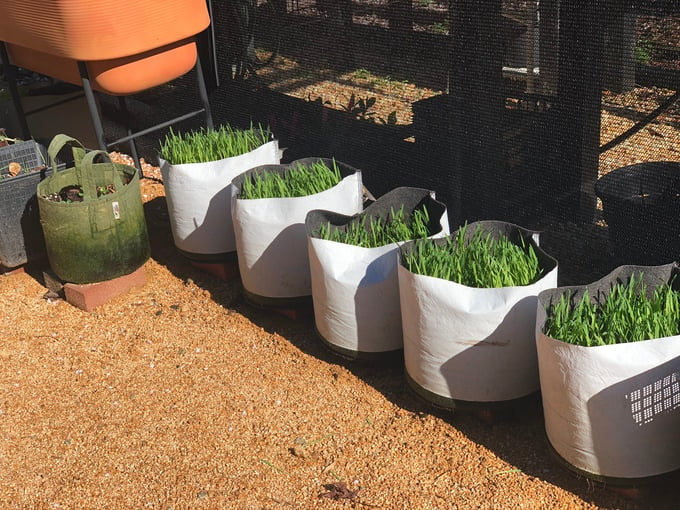
Grains planted in grow bag containers with Soil³ humus compost in Brie's garden. With their new blend with bark, the best choice for grow bags is Veggie Mix.
Seed Starting
Conventional wisdom will instruct you to use a lightweight potting mix, often with vermiculite and perlite for seed starting. And for more than 20 years that is exactly what I did. Often, I would lose seedlings from over and under watering.
Then, last year I decided to experiment with using Soil³ compost for my warm season seedlings, and wow what a difference it made! My germination rates were high and, more importantly, my transplant success was at 100%. By starting the seed in the same soil they will live in for the season I was able to eliminate transplant shock. See, even professionals can learn new things! Now I will never buy another bag of potting soil. Thank you Soil³!
I used to start my seedlings in their straight compost, but now I use their Veggie Mix blend with bark, for even better drainage.
Here's a related Soil³ post about Starting Seeds in Pure Compost.
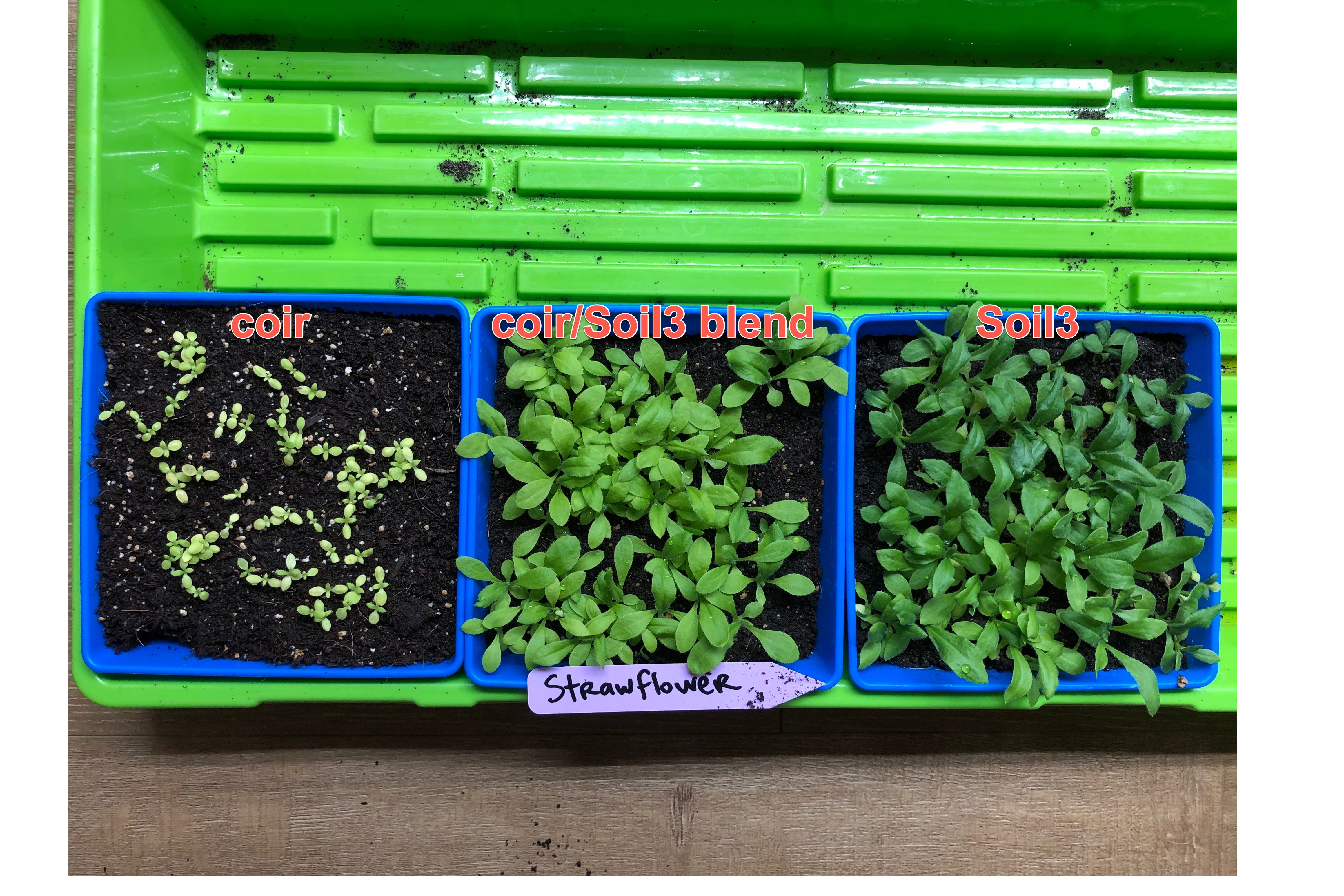
A seed experiment testing a coir-based seed blend vs. a 50/50 mix of coir/Soil³ and straight 100% Soil³. The results are clear - the seedlings in Soil³ are larger and greener. Experiment and photo by Hillary Thompson.
Growing in a New Development
Gardening in a newly developed neighborhood is HARD and that is why investing in Soil³ compost is really important. The Southeast is the fastest developing region in the United States, so even if you don’t live in a new neighborhood, I bet you have friends and family who do.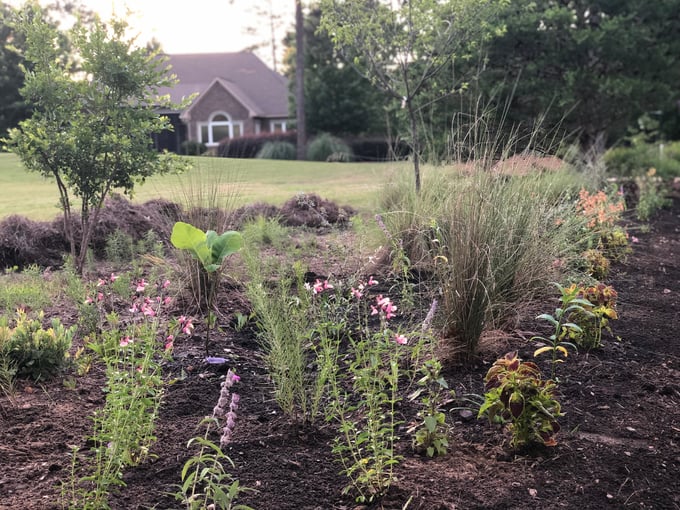
I added a few inches of Soil³ compost to the top of this bed at my parent's newly constructed house before planting.
For more than a decade, it’s been my ongoing challenge as a horticulture professional to design for the extreme conditions of a brand-new landscape. Too often the most important thing is not addressed from the start… SOIL! I wish every real estate agent would buy their customers a bag of Soil³ as a welcome to your new home gift. That would be setting everyone up for a successful experience.
In a Nutshell
The best advice I can offer is to get busy putting out Soil³.
- For seed starting: Use Veggie Mix. No need to blend with anything else.
- For containers, pots, planters, grow bags, window boxes: Also use Veggie Mix. Also, no need to blend with anything else.
- For raised beds of all types: Fill them up with Veggie Mix!
- For in-ground vegetable gardens: Spread at least 1 cubic yard of Veggie Mix for every 500 square feet of ground you are planting. No need to till it in. Plant right in it!
- For New Landscapes: Use the compost for ornamental plants. The sooner you start, the sooner your landscape will recover and actually start to grow. As for how much… the more the better! I would recommend applying 8-12’’ of compost on top of the existing ground to get started. Basically, you will never have TOO MUCH!
- Annual Topdressing: Use the compost for topdressing ornamental beds and lawns. Use 1/4” on lawns and 1-2” directly on your beds.
If you have ANY gardening questions, please send them my way!
Until next month, I wish you all the best!
Happy soil³-ing,
Brie
All photos by Brie, unless otherwise noted.
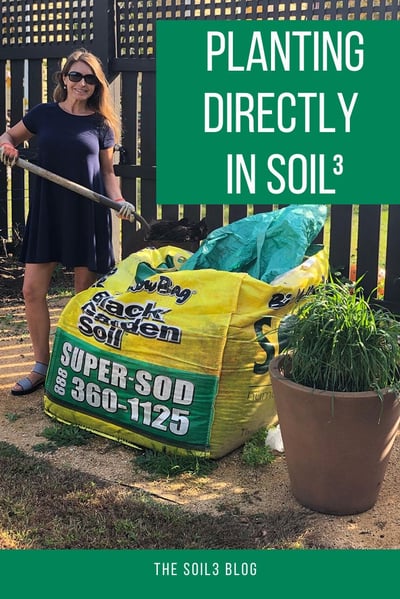
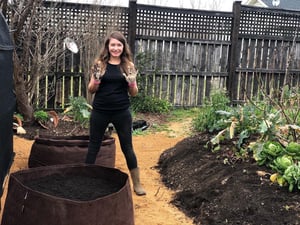
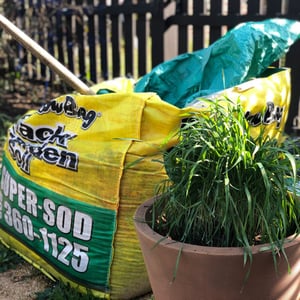

Did this help you out? Have any questions for clarity? Leave a comment below!